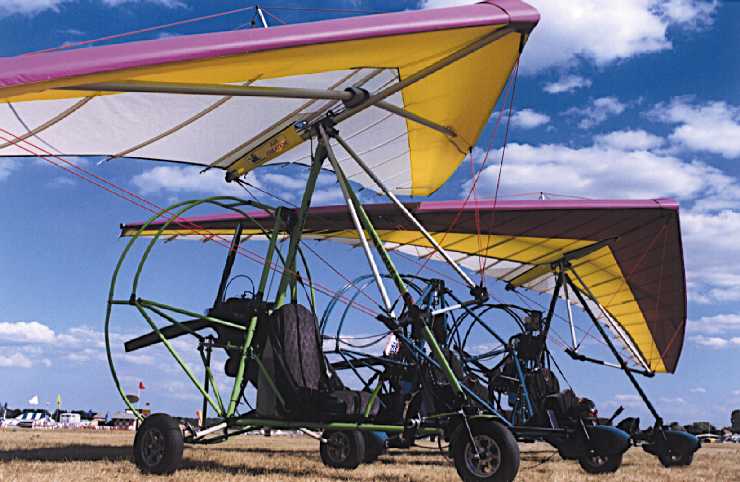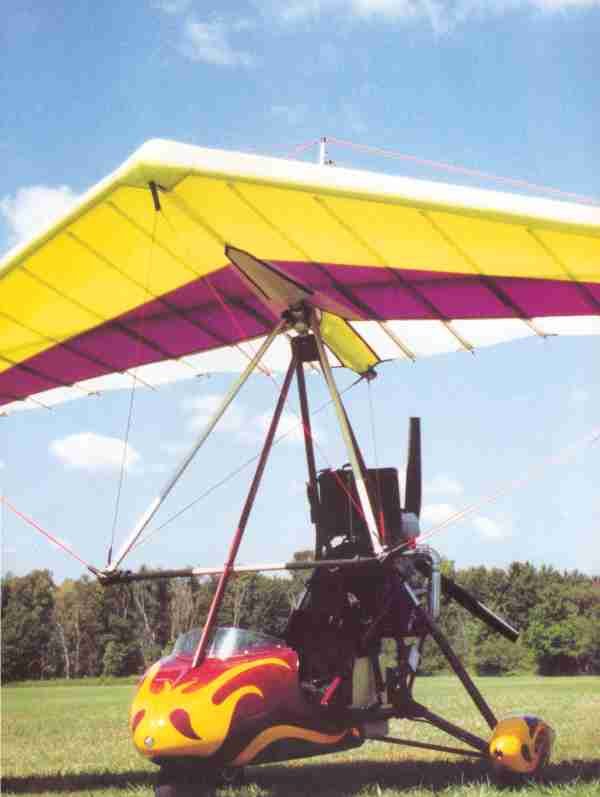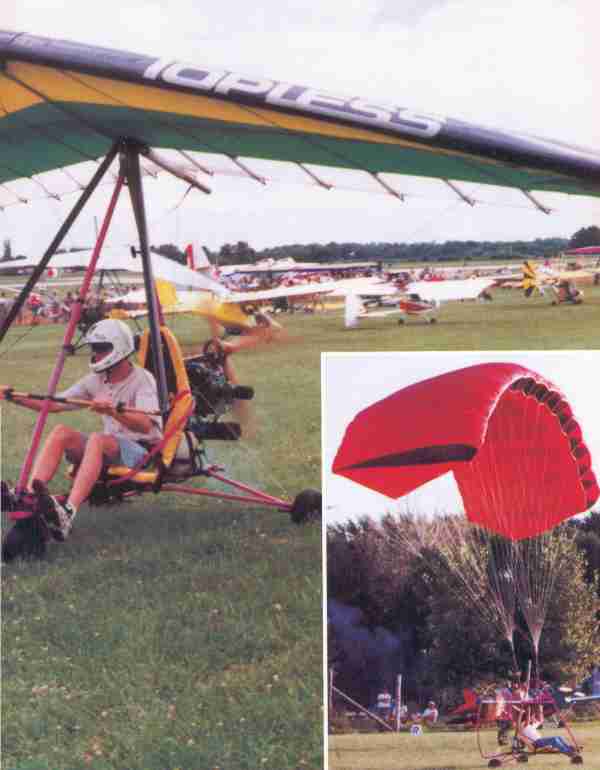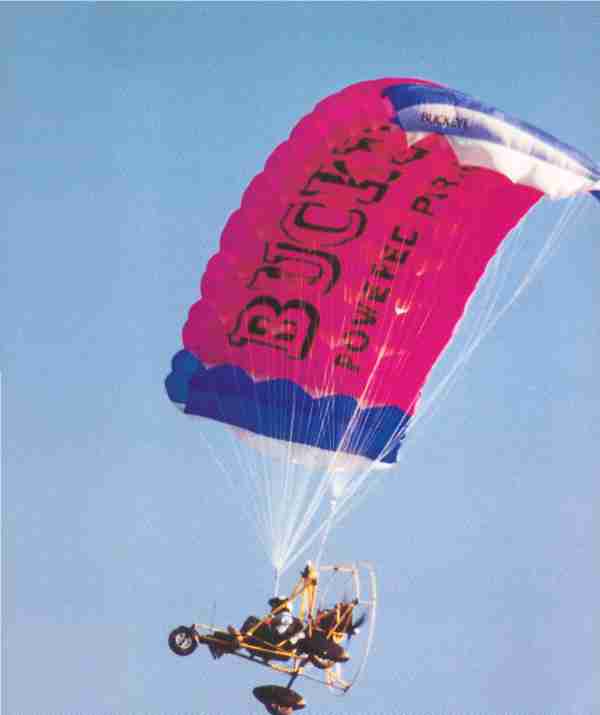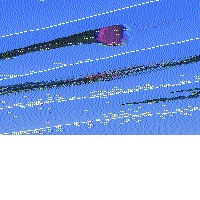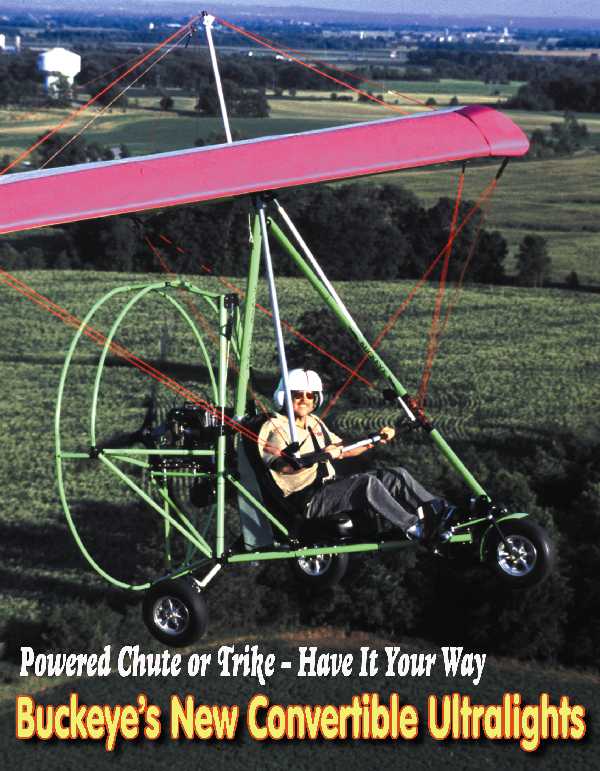
I never really noticed before just how much the Buckeye Industries powered parachute carriage looked like a trike carriage. Maybe you didn’t either, but in your mind’s eye, remove the prop guard and see if you don’t agree. They aren’t identical, of course, but the visual relationship is uncannily close considering the two aircraft types developed separately. What a perfect situation. Ralph Howard’s family members and friends have built Buckeye from “nothing” to one of the world’s largest aircraft manufacturers, all in the ’90s and without even using the entire decade! Whatever combination of talent, money, timing and luck was involved in this tale of success, the Howards want to keep it going strong. That won’t be easy, but these Indiana Hoosiers may be up to the task. Take the momentum of a reported several hundred powered parachute units sold each of the last few years. Revise the hardware slightly to expand into the manufacture of trikes, and you have a potent mixture that could emerge as one of America’s largest trike builders.



